Mira Prabhu's Blog, page 90
October 16, 2013
You Don’t Own A Damned Thing – Samsara’s Seven Flavors #6/12
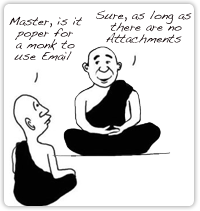 Flavor #2: No ownership. Most of us live with the feeling that we call the shots in our personal lives, that we own our lives. But what does ownership really mean? In essence, it indicates that you control the destiny of a thing.
Flavor #2: No ownership. Most of us live with the feeling that we call the shots in our personal lives, that we own our lives. But what does ownership really mean? In essence, it indicates that you control the destiny of a thing.
Let’s talk about how I came to “own” my spectacular home in the hills…say I inherited a nice chunk from my doting grandma, hunted high and low until I found my dream home, negotiated with a real estate shark to buy it, moved my family in, and threw the grandest housewarming party ever. This is my home, right?
But if I truly owned it, how come I lost it? If I accept that ownership implies control of destiny, the corollary is that I own nothing, not even my body or mind. If I did, I’d probably maintain my body in peak condition and suffuse my mind with constant blasts of ecstasy — instead of getting old and sick and being victim to a range of unpleasant moods.
Gawd Almighty, does this mean I don’t even own that shirt I picked up at that funky boutique last weekend? Come to think of it, someone could steal it right off the laundry line this afternoon while I take my forty winks, and then it would become her shirt!
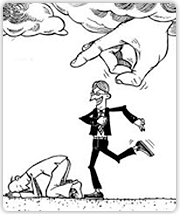 So the invisible machinery of karma is busily at work, giving and taking according to immutable laws about which we ordinary humans don’t have a clue. The good news is that if I practice seeing all things as impermanent, and digest the truth that I don’t really own a thing, I’m bound to experience increasing freedom and peace.
So the invisible machinery of karma is busily at work, giving and taking according to immutable laws about which we ordinary humans don’t have a clue. The good news is that if I practice seeing all things as impermanent, and digest the truth that I don’t really own a thing, I’m bound to experience increasing freedom and peace.
So why do those who accept impermanence and the lack of ownership still get upset when they face loss? Because there’s a killer gap between what we can accept intellectually, and the corresponding lag in our emotions. As we close this gap through personal practice, our suffering decreases.
Master the art of accepting impermanence and the lack of ownership, and you turn into a really cool customer. Tragedy could strike, and while not discounting the initial shock factor, you’d soon learn to say, yes, of course, that’s the nature of relative reality — after all everything is impermanent and I don’t really own a damned thing, so let’s get a move on, next!
Follow Blog via Email
Enter your email address to follow this blog and receive notifications of new posts by email.


October 15, 2013
The Impermanence of All Things – Samsara’s Seven Flavors – #5/12
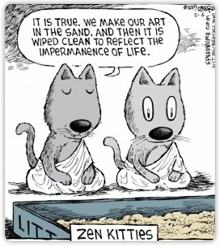 Flavor #1: Impermanence. Great sutras teach us that all people and things inevitably vanish, like dewdrops evaporating in the radiant morning sun; however, while intellectually we may accept that all that is born must eventually die, in our daily lives we ignore the stark fact that not just our intimate relationships and material possessions, but also our bodies and minds, are hurtling inexorably towards destruction.
Flavor #1: Impermanence. Great sutras teach us that all people and things inevitably vanish, like dewdrops evaporating in the radiant morning sun; however, while intellectually we may accept that all that is born must eventually die, in our daily lives we ignore the stark fact that not just our intimate relationships and material possessions, but also our bodies and minds, are hurtling inexorably towards destruction.
Let’s say my lover presents me with an exquisite magenta orchid in a delicate porcelain bowl. I are aware that all flowers die, and yet I simultaneously perceive this orchid as having permanence. When I wake up next morning, my precious orchid is wilting, and by evening, it’s dead — bursting the bubble in which I first saw it as solid and permanent.
It is this same feeling of permanence that we humans attribute to all parts of our lives, and which causes us to suffer. For instance, I may believe so strongly that my marriage will last forever, that when discord, divorce or death loom, I react with fear, disbelief and anger. Or I may be quite quite sure that my lovely home in the hills will stay mine forever; then a financial crisis prevents me from paying the mortgage, and the bank repossesses it, leaving me utterly devastated.
Had I trained myself to see all things as transient, I would be applying a major antidote to all the pains of mundane living — for the bald truth is that the orchid, home and spouse are but flashes on an infinite timeline, comets streaking across the screen of my life.
 To be able to constantly view our relative world as impermanent takes immense spiritual sophistication, but the incentive to perfect this view is so we won’t break down when tragedy strikes — for instance, the tragic death of a loved one will naturally bring sadness, but not necessarily emotional meltdown. And by adjusting ourselves to the truth of our ephemeral existence, we begin to experience increasing peace.
To be able to constantly view our relative world as impermanent takes immense spiritual sophistication, but the incentive to perfect this view is so we won’t break down when tragedy strikes — for instance, the tragic death of a loved one will naturally bring sadness, but not necessarily emotional meltdown. And by adjusting ourselves to the truth of our ephemeral existence, we begin to experience increasing peace.
Follow Blog via Email
Enter your email address to follow this blog and receive notifications of new posts by email.


October 14, 2013
Diamond Sword – Samsara’s Seven Flavors #4/12
Check out these excerpts from the introduction I wrote on Mahamudra:
 Imagine you own a sword fashioned of pure diamond which can slice through to the blazing heart of reality. This sword, however, is sheathed in layers of ignorance and is your own mind, your own consciousness. The poisons that dull its brilliance are delusions about the ultimate nature of reality, poisons that begin to form from our first moments of consciousness, when we begin to see all things as fixed in their nature — beautiful and ugly, cruel and kind, good and bad.
Imagine you own a sword fashioned of pure diamond which can slice through to the blazing heart of reality. This sword, however, is sheathed in layers of ignorance and is your own mind, your own consciousness. The poisons that dull its brilliance are delusions about the ultimate nature of reality, poisons that begin to form from our first moments of consciousness, when we begin to see all things as fixed in their nature — beautiful and ugly, cruel and kind, good and bad.
Feelings spring forth from this world-view. We learn to like and dislike, to desire and to push away, to crave and to seek escape. This gives rise to an uncontrollable stream of thoughts, often resulting in heedless words and actions.
Then, when our physical body dissolves back into the elements, our mindstream lives on, impregnated with the seeds of these habitual patterns. We are forced to take birth again, and the great wheel makes another turn. We suffer, age and die, again and again and again, trapped in defective worlds of our own creation.
Is there a way out of this madness? Yes! If we transform the way we think, speak and act, the movie of our relative life transforms too: Karma metamorphoses into a benevolent producer intent on giving us a blissful role, using her power to create a paradise for us to play within. Karma is compelled to act in this manner because the world is “empty”, because there is no base reality, because it is our thoughts, words and actions alone that fashion our reality.
 Mahamudra is the systematic stripping of ignorance that all of us must undertake at some point in our eternal timeline. If we succeed in eliminating poisons that incline us to perceive ugliness instead of beauty, we are in a position to construct heaven. The stakes are incredibly high — eons of suffering if we don’t clean up the mess, luminous immortality if we do.
Mahamudra is the systematic stripping of ignorance that all of us must undertake at some point in our eternal timeline. If we succeed in eliminating poisons that incline us to perceive ugliness instead of beauty, we are in a position to construct heaven. The stakes are incredibly high — eons of suffering if we don’t clean up the mess, luminous immortality if we do.
Follow Blog via Email
Enter your email address to follow this blog and receive notifications of new posts by email.


October 13, 2013
Mahamudra, The Great Seal – Samsara’s Seven Flavors #3/12
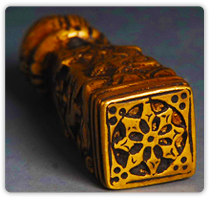 Etymologically, Mahamudra is a combination of two Sanskrit words: maha, or great, and mudra, translated in this context as seal. In ancient times, minus the ease of communication that we take for granted, seals were the only way to confirm the authenticity of, say, a royal command. If an old world monarch sent an order to an outlying province to execute a corrupt minister before sundown, that message would have to bear his personal seal in order for it to be obeyed. And in the context of samsara or relative reality, Mahamudra is that seal of authenticity, for its characteristics are ubiquitous even in the tiniest aspect of samsara.
Etymologically, Mahamudra is a combination of two Sanskrit words: maha, or great, and mudra, translated in this context as seal. In ancient times, minus the ease of communication that we take for granted, seals were the only way to confirm the authenticity of, say, a royal command. If an old world monarch sent an order to an outlying province to execute a corrupt minister before sundown, that message would have to bear his personal seal in order for it to be obeyed. And in the context of samsara or relative reality, Mahamudra is that seal of authenticity, for its characteristics are ubiquitous even in the tiniest aspect of samsara.
Samsara, our guru defined as the condition of being forced by the power of one’s own karma to repeatedly take on an impure body and mind; in other words, the minds and bodies we currently wear are the sole creation of our personal karma created over thousands of lifetimes. It’s okay to have a mind-body system, he’d say with a laconic grin, but not one that is forced on you.
As for Emptiness, it is an inadequate translation of the Sanskrit word Shunyata, the fecund void from which all things manifest, and for which no equivalent exists in the western philosophical paradigm. Why did western scholars use the word empty to describe Shunyata? Because the perception of an object depends on who is doing the perceiving — and it is therefore empty of having a fixed and permanent nature of its own. One man’s meat is another man’s poison….beauty is in the eyes of the beholder. These truisms refer to a great truth — that every pair of eyes that views an object is compelled to see it differently.
Why the word compelled? Because we are each literally forced to perceive an object in a particular way. Watch a movie with a couple of friends for instance, and all three of you might have a contrasting opinion – you love it, Keshav hates it, Anthea is bored. So the movie itself is essentially empty of having a fixed nature and is no more than a blank screen upon which each viewer projects his or her personal likes and dislikes.
 This phenomenon holds true even when folks agree on a thing, for individual perceptions differ at least slightly. And when non-humans perceive the same object, there are no common labels: for instance, what a soaring hawk sees when he looks down at a patch of forest a human can only speculate upon.
This phenomenon holds true even when folks agree on a thing, for individual perceptions differ at least slightly. And when non-humans perceive the same object, there are no common labels: for instance, what a soaring hawk sees when he looks down at a patch of forest a human can only speculate upon.
Another critical teaching of eastern philosophy is that before we can see properly, we must first cultivate the right view, the correct filter through which to perceive the reality we inhabit. This view is critical particularly to the seeker of ultimate freedom.
Follow Blog via Email
Enter your email address to follow this blog and receive notifications of new posts by email.


October 12, 2013
Absolute & Relative Reality – Samsara’s Seven Flavors #2/12
 Angelica and I rode the subway into downtown Manhattan, then walked to a packed hall near 8th street in the simmering east village to hear this lama speak. And she was right — he was brilliant and magnetic. In hindsight, it is easy to see how his unique methods of teaching eastern wisdom gave my own life rich meaning, and forever changed its course.
Angelica and I rode the subway into downtown Manhattan, then walked to a packed hall near 8th street in the simmering east village to hear this lama speak. And she was right — he was brilliant and magnetic. In hindsight, it is easy to see how his unique methods of teaching eastern wisdom gave my own life rich meaning, and forever changed its course.
The next few years flashed by as I studied with him, absorbing every nugget he dropped. I saw his ego grow monstrous as his flock swelled, but I stayed on, convinced that his teachings were authentic, culled directly as they were from the ancient scriptures. In fact I was so enraptured by his efforts to spread the dharma among the lost tribes of Manhattan that I offered to transcribe his teachings on Mahamudra — a word that has many connotations in the Buddhist world, but which he introduced to us as an ancient teaching on the nature of samsara, or relative reality.
Eastern philosophy teaches that there are Two Truths — Absolute and Relative. The Absolute is the true nature of all beings without exception, and is often characterized as having three qualities — existence, consciousness and bliss, which are really the same one thing — just as mango ice-cream is simultaneously cold, sweet and tastes of mango. It is only the Relative (samsara) that varies from being to being.
 Before we can begin to merge with the Absolute that is our true nature, however, we must first make sense of our relative lives. And this is where Mahamudra enters the picture, for it is an analytical meditation that breaks mundane reality into easily digestible, and therefore dismissible, blocks.
Before we can begin to merge with the Absolute that is our true nature, however, we must first make sense of our relative lives. And this is where Mahamudra enters the picture, for it is an analytical meditation that breaks mundane reality into easily digestible, and therefore dismissible, blocks.
When one accepts that all things are subject to these flavors (flavors, not steps or stages, since none is higher or lower), one’s relative reality finally begins to make sense, and one is free to move forward with clarity and confidence.
Follow Blog via Email
Enter your email address to follow this blog and receive notifications of new posts by email.


October 11, 2013
Angelica’s Brilliant Lama – Samsara’s Seven Flavors #1/12
 Peak of summer, Manhattan 1995….life was on the upswing, what with an admin gig at a top law firm a hop, skip and jump from Grand Central, and my very own co-op apartment in picturesque Brooklyn Heights, whose major attraction happened to be a fabulous roof garden with a scintillating nocturnal view of New York’s other three boroughs (Queens, Manhattan and Staten Island), and glimpses of the cool blue profile of the Lady of Liberty towering majestically over the horizon.
Peak of summer, Manhattan 1995….life was on the upswing, what with an admin gig at a top law firm a hop, skip and jump from Grand Central, and my very own co-op apartment in picturesque Brooklyn Heights, whose major attraction happened to be a fabulous roof garden with a scintillating nocturnal view of New York’s other three boroughs (Queens, Manhattan and Staten Island), and glimpses of the cool blue profile of the Lady of Liberty towering majestically over the horizon.
A swirl of friends — artists, musicians, writers, poets, sculptors, photographers, and the occasional lawyer or stockbroker befriended during my years of freelancing on Wall Street and in Manhattan’s law firms — added zest to the mix. And while the week was one crazy stretch of slogging to keep body and soul together, weekends allowed me to dip my soul into hatha yoga and meditation, an amazing novel, an off-Broadway show, or even a Shakespeare evening performance in Central Park, after which a bunch of us would troop over to some generous stranger’s penthouse on the upper west side to party beneath a canopy of stars.
And yet, if life was so wonderful, why then did angst continue to gnaw at my insides like a vicious sewer bandicoot? I forced myself to face the bitter truth — despite the glamorous facade of my life, I was alone and adrift in a thrumming city that never sleeps, learning the hard way that freedom’s just another word for nothing left to lose.
How to get off this rapidly spinning wheel? I’d walked away from my marriage with zilch, and was now paying big chunks for taxes, Social Security, Medicare and a co-op mortgage — which rendered the prospect of escape bleak. I saw other slaves of New York growing cynical as they accepted their fate — but I, like a female Icarus, yearned to fly free, even if I burnt my gossamer wings daring to approach the blazing sun of liberation.
 One Saturday morning I strolled down to Atlantic Avenue to shop at my favorite grocery store, owned by courtly Moroccans. I stepped right into a scene from a souk in the Arabian Nights: wooden vats of black and green olives, tubs overflowing with varieties of grains, oils, herbs, and links of merguez (spicy Moroccan lamb sausage) dangling from the eaves Mehmet handed me a cup of mint tea flavored with orange blossom honey and a portion of baklava that melted deliciously in my mouth, and, as I basked in their old-world warmth, my mundane worries temporarily dissolved into joy.
One Saturday morning I strolled down to Atlantic Avenue to shop at my favorite grocery store, owned by courtly Moroccans. I stepped right into a scene from a souk in the Arabian Nights: wooden vats of black and green olives, tubs overflowing with varieties of grains, oils, herbs, and links of merguez (spicy Moroccan lamb sausage) dangling from the eaves Mehmet handed me a cup of mint tea flavored with orange blossom honey and a portion of baklava that melted deliciously in my mouth, and, as I basked in their old-world warmth, my mundane worries temporarily dissolved into joy.
Backpack laden with goodies, I walked out of the store and spotted Angelica, slouching along on the other side of the avenue in faded Levis and paint-splattered sweatshirt, lank blonde hair framing a moody face. A struggling artist who lived precariously in a Williamsburg loft with a heroin-addicted sculptor, Angelica was on a perennial hunt for a savior. Once, stoned out of her head at a party, she’d blurted out that, soon after she’d turned five, her dad had stormed out of the house following a fight with her drunken mother, whereupon her mother had picked up a baseball bat and swung it at Angelica, shattering several tiny ribs; clearly this was but one of the many violent domestic episodes that had shattered Angelica’s faith in humanity.
“Hey Mira,” Angelica yelled, her face lighting up as she saw me. “I’m going to check out this brilliant lama tonight down in the Village. Wanna come?
Follow Blog via Email
Enter your email address to follow this blog and receive notifications of new posts by email.


September 26, 2013
Quiche, Coffee & The Morning Pages…
Quiche, Coffee & The Morning Pages was featured (on Sep 17, 2013) as a Guest Post on Indies Unlimited. Indies – the happening website for independent publishers worldwide!
 It’s the Manhattan winter of 1992, less than three months since I’ve left my mate of fourteen years, losing, in one fell swoop, all the solid props of my life. To stay financially afloat, I take on freelance administrative gigs in arguably the planet’s most frenzied and high-stakes city.
It’s the Manhattan winter of 1992, less than three months since I’ve left my mate of fourteen years, losing, in one fell swoop, all the solid props of my life. To stay financially afloat, I take on freelance administrative gigs in arguably the planet’s most frenzied and high-stakes city.
Weeks are busy, but weekends are poisoned with a high-octane cocktail of anxiety, guilt and confusion; I cannot seem to extricate myself from the tangled nest of viperous thoughts that paralyze me into a state of chronic despair. Have I done right in placing personal integrity above the comfort of family and economic security?
Sunday morning dawns and my neighbour Leanna calls to invite me over for brunch. She hands me a copy of Julia Cameron’s The Artists’ Way. “No thanks,” I say ungraciously. “I’ve enough to read.” She presses it on me, betraying a pity that turns my proud stomach. “This will free your head up, honey,” she says gently. “A bunch of us got together and did the exercises. They do work, you know.”
Leanna is decades my senior, a sculptor who owns the four-storey brownstone bang opposite me. Her scientist husband is doing something top secret in the Negev Desert, their only son has moved to Brazil to be with his stunning girlfriend. With no one else around to cosset, Leanna has taken me firmly under her wing. Something about my face reminds her of the fragile sister she’d lost to suicide seventeen years ago.
She has read my unfinished collection of short stories about Indian women on the verge of a nervous breakdown. She admires them and thinks I have it in me to write a novel. She feeds me home-made broccoli-cheddar quiche, brews fragrant coffee in the ancient Italian coffee-maker, and drops a light kiss on my cheek. This abundance of caring evokes stirrings of discomfort, but I am not so far gone that I cannot acknowledge it as a rare gift in a world known for its conditional love.
Before I leave—armed with the rest of the quiche and a pound of organic pears—Leanna rushes into her study and returns with a big red journal. “Here, take this too,” she says. “You’ll need it to do the exercises in the book.”
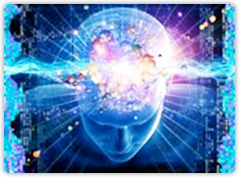 I scan The Artist’s Way that night in bed. No way I will do the exercises, I decide, but one concept does strike me as intriguing—what Cameron calls the Morning Pages: Dump all your waking thoughts onto paper, she advises, without sequence, repetitiously if need be, and make it a minimum of three pages. And what will this do for the half-awake scribe? Unplug the drain of the mind and allow all the crap blocking it to sink into oblivion—whereupon creative juices begin to flow again. Well, I sneer as I lie back on my soft pillows, let’s bloody well see, shall we?
I scan The Artist’s Way that night in bed. No way I will do the exercises, I decide, but one concept does strike me as intriguing—what Cameron calls the Morning Pages: Dump all your waking thoughts onto paper, she advises, without sequence, repetitiously if need be, and make it a minimum of three pages. And what will this do for the half-awake scribe? Unplug the drain of the mind and allow all the crap blocking it to sink into oblivion—whereupon creative juices begin to flow again. Well, I sneer as I lie back on my soft pillows, let’s bloody well see, shall we?
Monday morning my brain feels wrapped in cotton wool. I’ve an hour to go before I catch the subway to the World Trade Center where I work for a stockbroker on the forty-ninth floor—an absent-minded fellow who leaves me alone so long as I pick up his calls and type his memos. Grunt work that pays well.
I sit at my dining table and jot down every scrap of thought that floats into my mind. Amorphous fears connected to the great crime I have committed as an Indian woman from a traditional background—of cutting loose from a husband who did not consider me his equal, and so felt free to deceive me in crucial ways—emerge in bloody bits and coalesce into bizarre patterns. By walking away, I’ve alienated my blood family and callous in-laws. And what is the brilliant result of my escape? A solitary and frugal existence on the third floor of a brownstone with sagging wooden floors in a cold and glittering city where no one seems to care a rat’s ass about the fate of one more immigrant who’s lost her way.
Every day I pour my heart and soul out before rushing off to work. On weekends I write upwards of ten pages in one manic go. I’ve used up Leanna’s journal and write on my computer instead. All the junk collecting dust in the attic and basement of my mind finds its way into the middle to be sorted out. Yucky stuff bubbles out of subconscious reservoirs. My job is to drag it yelping and whining into the fire of a new consciousness to be burnt to ashes.
Soon I become aware that a miracle has occurred: I am now certain that I did the right thing in abandoning a situation that had threatened to drown me in the quicksand of the mundane and the mediocre. My mind grows clean and sharp and shining. It tells me I am not alone or helpless as I pursue this sacred mission to be free. The word is God, I mutter to myself in growing excitement, even as I jettison all that is holding me back from knowing how powerful I truly am.
 Twenty-three years later, I have a novel making wavelets out in the world, two more simmering on the back burner, and a blog—produced in alliance with exceptional friends—highlighting the metaphysical and mundane aspects of this amazing life I have been allowed to live. And while those distant days of emotional paralysis in New York have long since given way to days of increasing certainty, whenever the demons of chaos drive holes into my ability to function in top gear, I never hesitate to return to that old way of writing myself sane.
Twenty-three years later, I have a novel making wavelets out in the world, two more simmering on the back burner, and a blog—produced in alliance with exceptional friends—highlighting the metaphysical and mundane aspects of this amazing life I have been allowed to live. And while those distant days of emotional paralysis in New York have long since given way to days of increasing certainty, whenever the demons of chaos drive holes into my ability to function in top gear, I never hesitate to return to that old way of writing myself sane.
Follow Blog via Email
Enter your email address to follow this blog and receive notifications of new posts by email.


September 15, 2013
Demon of Eclipses & Illusions – Part 9/9
 The non-addict does not understand why an addict continues to hurt himself. A “normal” person sees an alcoholic woman racked by smokers’ cough; her teeth are yellow, her fingers stained with nicotine, she stinks of booze, sounds like death warmed over, and is under medical supervision for a range of potentially fatal illnesses.
The non-addict does not understand why an addict continues to hurt himself. A “normal” person sees an alcoholic woman racked by smokers’ cough; her teeth are yellow, her fingers stained with nicotine, she stinks of booze, sounds like death warmed over, and is under medical supervision for a range of potentially fatal illnesses.
The “normal” person scratches her head, puzzled — why the hell is this woman doing this to herself? Why can’t she just stop this nonsense right now? Why indeed! The bitter truth is that the urge to self-destruct is built into addiction, and only the fellow addict discerns this — which is why the Twelve Step Program — designed by addicts and alcoholics to help addicts and alcoholics stay sober — has such an astounding track record.
Built into this dis-ease of self-destruction is shame — a sickening emotion that continues to fuel the addiction. The genius of the Twelve Step tradition lies in defusing this shame by encouraging addicts to speak openly about their demons. “We are only as sick as we are secret,” is one 12-step motto, and in the cozy anonymity of thousands of church basements and other meeting spaces all over the globe, addicts and alcoholics are encouraged to spill their deepest darkest secrets, knowing full well that they are not alone, and that they have the support of millions who famously “love them until they can learn to love themselves.”
A friend told me this true story he’d heard in one of Manhattan’s many anonymous Narcotics Anonymous meetings. The speaker was once a rising star on the New York Stock Exchange. At the height of his career, in his early 30s, he was easily more than a millionaire, had a gorgeous ramp model girlfriend, and owned an expensive condo in Sutton Place on the posh east side of Manhattan. Then, one fine day, a “friend” offered him a line of pure cocaine at a party…within a year, he was on the streets, having lost his job, his girlfriend, his apartment, the respect of his family, and all his money.
 Sitting alone on the dirty bare floor of an abandoned and gutted building in Harlem one evening, having descended to the level of begging so he could buy a single vial of crack — much cheaper than cocaine — he finally admitted to himself that he’d lost everything he’d ever treasured to this white and insatiable demon. Withdrawal pangs combined with a ravenous hunger for some decent food.
Sitting alone on the dirty bare floor of an abandoned and gutted building in Harlem one evening, having descended to the level of begging so he could buy a single vial of crack — much cheaper than cocaine — he finally admitted to himself that he’d lost everything he’d ever treasured to this white and insatiable demon. Withdrawal pangs combined with a ravenous hunger for some decent food.
As he sat on that grimy floor, too shattered to move, a mouse darted out of a hole in the wall. The tiny creature scampered across the floor to pick up a stale morsel probably dropped by another junkie, and scampered back into his hole. The ex-stockbroker felt a vicious stab of envy — that creature had something to eat and a home to spend the night! That creature was way better off than he was! He wanted to slit his wrists in that abandoned building, but he had no tool to do the job.
In that moment of utter despair, he heard a voice whisper to him that it was time to recover, and that in this great task he would be helped — if only he was willing to surrender. He was, and he did make it through that dark tunnel and into the light, but not without a tremendous amount of grit. Though he never again reached his old level of material success, he became a much happier man who spent his spare time helping those who needed a hand battling their demons.
Despite my own emotional roller-coastering, I am much stronger in my resolve not to surrender to the many seductions of the dark side. I keep in mind that Mara and Satan besieged Gautama and Jesus at their most vulnerable and critical times — and that these luminous beings knew full well that to succumb would have been to invite ghastly suffering. In fact, all the great beings who have risen into the light against all obstacles are my heroes, my icons, my enduring inspiration. Ramana Maharshi is one such blazing light who advises those who follow his simple but profound path to do that which takes you closer to the Self.
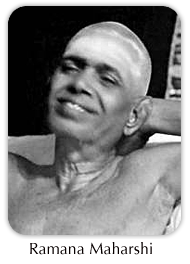 Today my practice of Vichara or Self-Investigation returns me on a necessarily quotidian basis to spiritual sanity. Today I know that my emotional demons harass and vex me only when my ego is in charge. As I keep moving towards the Self — pure existence-consciousness and bliss — there remains no good reason to hide anything, for the light that is the source of both manifest and unmanifest floods every single nook and cranny of the cosmos.
Today my practice of Vichara or Self-Investigation returns me on a necessarily quotidian basis to spiritual sanity. Today I know that my emotional demons harass and vex me only when my ego is in charge. As I keep moving towards the Self — pure existence-consciousness and bliss — there remains no good reason to hide anything, for the light that is the source of both manifest and unmanifest floods every single nook and cranny of the cosmos.
Part 1
Part 2
Part 3
Part 4
Part 5
Part 6
Part 7
Part 8
Part 9
Follow Blog via Email
Enter your email address to follow this blog and receive notifications of new posts by email.


September 14, 2013
Demon of Eclipses & Illusions – Part 8/9
 During my teens in south India, I sneaked outside during a boisterous party for a secret puff. An older male relative caught me in the act. “Put that out immediately!” he ordered, even as he lit up his own ciggie and exhaled a stream of toxic smoke in my direction. “Think you’re cool to ape those foreign movie stars, do you? Well, let me warn you, young lady, an Indian woman who smokes is seen as nothing but a whore!”
During my teens in south India, I sneaked outside during a boisterous party for a secret puff. An older male relative caught me in the act. “Put that out immediately!” he ordered, even as he lit up his own ciggie and exhaled a stream of toxic smoke in my direction. “Think you’re cool to ape those foreign movie stars, do you? Well, let me warn you, young lady, an Indian woman who smokes is seen as nothing but a whore!”
“What about you guys?” I’d demanded, itching to throttle the arrogant sod. “You smoke like a chimney! Are you a whore?” He’d sighed and shaken his head, despairing. If I didn’t stop smoking pronto, he added sternly, he’d advise my father to get me married as soon as possible — it being sound Indian policy to tame a hellion before she brought unutterable shame to the family. I’d stomped away in a huff, too proud to let him see how his words had both shaken and infuriated me.
But I could not stop brooding over what he had said — why did I want to keep smoking? The truth was complex: one major reason was that cigarettes were available for me when people and situations let me down. And so I continued to smoke, on and off, for decades, despite all the wisdom and training I was simultaneously acquiring. Looking back, I can see that on the psychological level I smoked to separate myself from the traditional herd of Indian women, to make myself unwanted on the marriage market, to tell the guys that if you can get away with it, so can I!
It did not matter that the smoking demon had clearly affected me on every level — spiritual, mental, emotional, physical. And that there was shame attached to the habit — for most of my friends had long since quit, and now shuddered at the mere mention of a ciggie. Besides, I loved the teaching of the Bhagavad Gita — if Lord Krishna were advising me on the matter, I knew, he’d insist I do the right thing, regardless of the consequences. He’d warn me that demons disguise themselves as friends, and that I should be ready and willing to destroy anything that was ruining my divine right to health, peace and happiness.
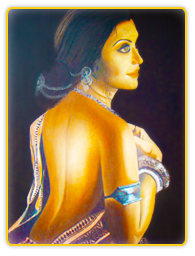 Addiction was such a burning issue with me that I wrote a novel based on it. In Whip of the Wild God, my protagonist Ishvari, a gorgeous tantrika, broken by her cruel lover and the lingering traumas of childhood, falls into the snare of the Demon of Eclipses and Illusions. By allowing her to reduce her demons to nothing, and thereby to rise into full and blissful enlightenment, I was only projecting my own desire for freedom into the cosmos.
Addiction was such a burning issue with me that I wrote a novel based on it. In Whip of the Wild God, my protagonist Ishvari, a gorgeous tantrika, broken by her cruel lover and the lingering traumas of childhood, falls into the snare of the Demon of Eclipses and Illusions. By allowing her to reduce her demons to nothing, and thereby to rise into full and blissful enlightenment, I was only projecting my own desire for freedom into the cosmos.
Part 1
Part 2
Part 3
Part 4
Part 5
Part 6
Part 7
Part 8
Part 9
Follow Blog via Email
Enter your email address to follow this blog and receive notifications of new posts by email.


Demon of Eclipses & Illusions – Part 7/9
 I once confessed to a guru that I suffered from an addictive personality. He startled me by roaring with laughter. “You and everyone else on the planet, Mira,” he retorted. “Anyone not fully enlightened is an addict of samsara.” Today I interpret his words this way: some of us are outright addicts to a range of substances. But there are subtle addictions too — to a particular lifestyle, a work routine that massages the ego, a favorite person, a diet, attention from others, sexual gratification, the consuming need to be appreciated by the world — and the list goes on, ad nauseam.
I once confessed to a guru that I suffered from an addictive personality. He startled me by roaring with laughter. “You and everyone else on the planet, Mira,” he retorted. “Anyone not fully enlightened is an addict of samsara.” Today I interpret his words this way: some of us are outright addicts to a range of substances. But there are subtle addictions too — to a particular lifestyle, a work routine that massages the ego, a favorite person, a diet, attention from others, sexual gratification, the consuming need to be appreciated by the world — and the list goes on, ad nauseam.
Substance addictions are the most easy to spot — and therefore easier to heal. Stop smoking, for instance, and you instantly halt the addiction. But subtle addictions are far more slippery: how to deal with the egoic compulsion to impress others with one’s beauty, intelligence, talent or wealth? Especially in an increasingly insane and plastic world, where we are encouraged to live artificial lives and are held to false standards, and where the workaholic, film star or billionaire is lauded and applauded?
If you too were born with an addictive personality, don’t worry, you are in stellar company. Here’s a short list of famous folks who used substances to run away from their pain demons: Marcus Aurelius, Emperor of Rome, reputedly addicted to opium; Charles Dickens, who used opium right up to his death by massive stroke; Bela Lugosi, early horror-movie star, who haunted opium dens and abused morphine; Florence Nightingale, another notorious opium user; comedian John Belushi, who died of an accidental overdose on a speedball (a lethal mixture of heroin and cocaine); Kurt Cobain, lead singer of Nirvana and heroin addict, who shot himself to death in his Washington home; Janis Joplin, iconic rock star of Woodstock and the radical 60′s, often forced to cancel shows because she was too stoned to go on stage; that haunting blues singer Billie Holiday, who succumbed to her heroin habit and massive quantities of alcohol; rising movie star River Phoenix, who died of a heroin-speedball overdose in Hollywood; Carrie Fisher, screenwriter and Star Wars Trilogy star, who abused prescription painkillers; Elvis Presley, King of Rock and Roll, who died in the mid 1970′s from a drug overdose in his fabulous Graceland home.
If you’ve been grappling with the demon yourself, you’ll be interested in this second list of celebrity addicts, past and present, most of whom succumbed to the dis-ease…. Alexander the Great, Ulysses Grant, Ernest Hemingway, Robert Louis Stevenson, Whitney Houston, Amy Winehouse, Michael Jackson, Heath Ledger, Anna Nicole Smith, John Belushi, Marilyn Monroe, Judy Garland and Jim Morrison. And now for some famous folk who won over the demon and are staying determinedly sober: Anthony Hopkins, Elton John, Betty Ford, Steven Tyler, Eminem, Mackenzie Phillips, Robert Downey, Jr., James Taylor, David Bowie, Robin Williams, Tim Allen, and Stephen King.
 India’s Bollywood boasts its very own glittering array of addicts and alcoholics. Here’s a short list: film director Mahesh Bhatt, who has poured his angst into his movie-making; Nepali actress Manisha Koirala, now reputedly sober; Arjun Rampal, brand ambassador for Chivas, unusually open (by close-mouthed Indian standards) about his long-standing affair with the bottle; Meena Kumari, haunting 60s Bollywood icon who succumbed to liver cirrhosis at the age of thirty-nine; Dharmendra, who used his creative energies to soothe his addictive demons;. lyricist Javed Akhtar, rumored to have composed his most sublime music in alcoholic states; Sanjeev Kumar, driven to drink by his unrequited love for south Indian diva Hema Malini, Guru Dutt, who played Svengali to actress Waheeda Rehman and ended his life with a lethal combo of pills and alcohol, and Silk Smitha, the sultry southern movie star whose gloom over her failed career and love life led her to commit suicide. God alone knows how many more are still in the closet.
India’s Bollywood boasts its very own glittering array of addicts and alcoholics. Here’s a short list: film director Mahesh Bhatt, who has poured his angst into his movie-making; Nepali actress Manisha Koirala, now reputedly sober; Arjun Rampal, brand ambassador for Chivas, unusually open (by close-mouthed Indian standards) about his long-standing affair with the bottle; Meena Kumari, haunting 60s Bollywood icon who succumbed to liver cirrhosis at the age of thirty-nine; Dharmendra, who used his creative energies to soothe his addictive demons;. lyricist Javed Akhtar, rumored to have composed his most sublime music in alcoholic states; Sanjeev Kumar, driven to drink by his unrequited love for south Indian diva Hema Malini, Guru Dutt, who played Svengali to actress Waheeda Rehman and ended his life with a lethal combo of pills and alcohol, and Silk Smitha, the sultry southern movie star whose gloom over her failed career and love life led her to commit suicide. God alone knows how many more are still in the closet.
Why does celebrity screw up the lives of so many? As a maven of eastern philosophy, allow me to explain it this way: the life of the actor/actress/model is rooted squarely in what Vedanta would term the unreal — an inherently unsatisfying realm of consciousness, for it is based on the shifting sands of a mass audience’s fickle perceptions, whims and fancies. The world, in a word, is a whore. As Andy Warhol said, in the future everyone will be world-famous for fifteen minutes.
Does one eschew a life in the public eye altogether? Far wiser to cultivate the attitude of the spiritually inclined folk who learn — most often via the school of hard knocks — to endure the kicks life regularly delivers to us all, even as they grow in wisdom. What is this attitude? You must find your own unique variation of: all righty then, today I’m famous, but pretty soon someone more cool, prettier, smarter, wittier or just plain sexier, is definitely going to usurp my seat on the Titanic. And the truth of the matter is that all of samsara is the majestically sinking Titanic — because even the most glorious career must come to an end, bringing to an abrupt halt all the superficial benefits of stardom.
Just for the record, while it’s clear that many of the world’s most charismatic people have also been the worst addicts, and it’s not your fault if you were born with an addictive personality, it is your responsibility to recover!
Part 1
Part 2
Part 3
Part 4
Part 5
Part 6
Part 7
Part 8
Part 9
Follow Blog via Email
Enter your email address to follow this blog and receive notifications of new posts by email.





